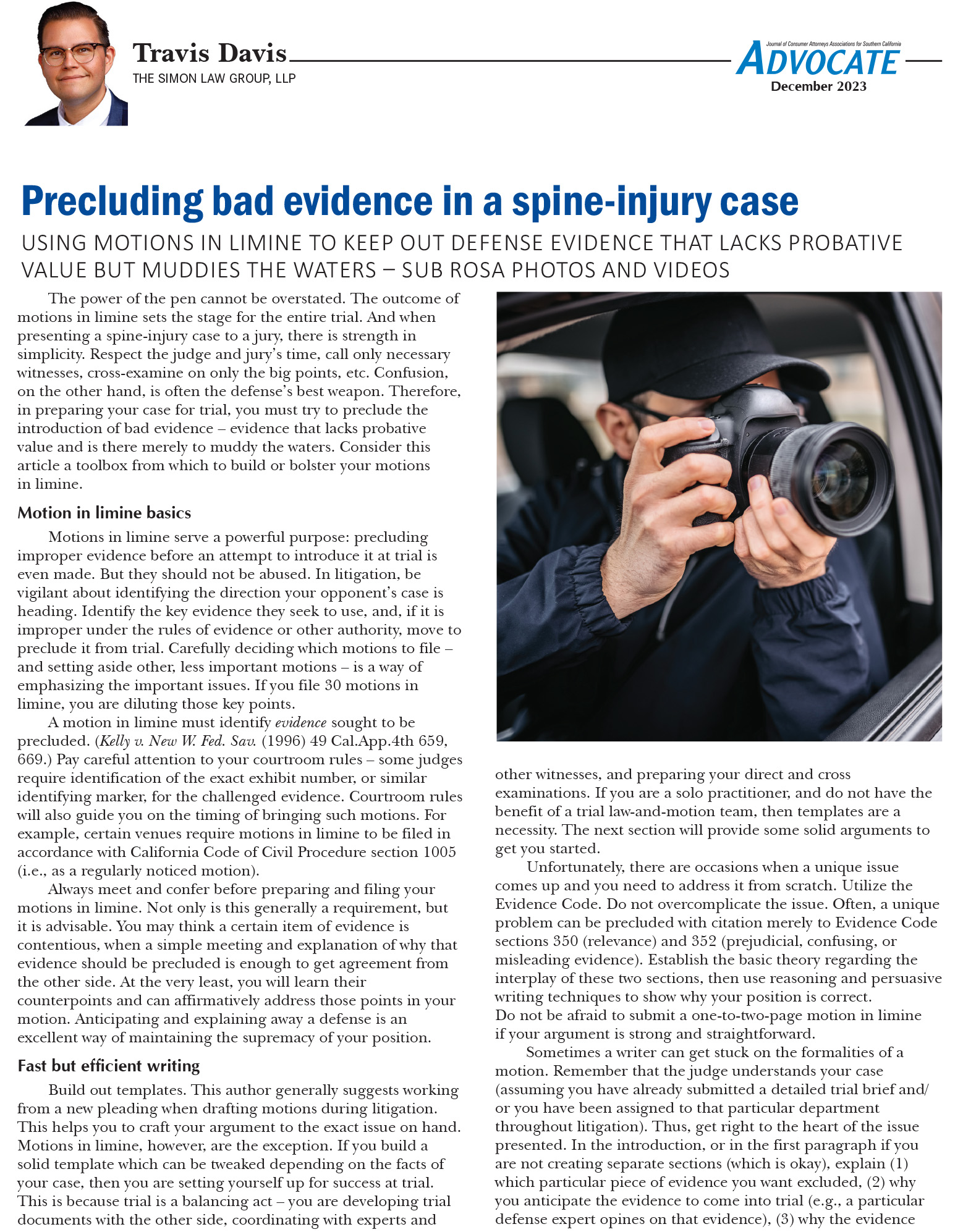USING MOTIONS IN LIMINE TO KEEP OUT DEFENSE EVIDENCE THAT LACKS PROBATIVE VALUE BUT MUDDIES THE WATERS — SUB ROSA PHOTOS AND VIDEOS
The power of the pen cannot be overstated. The outcome of motions in limine sets the stage for the entire trial. And when presenting a spine-injury case to a jury, there is strength in simplicity. Respect the judge and jury’s time, call only necessary witnesses, cross-examine on only the big points, etc. Confusion, on the other hand, is often the defense’s best weapon. Therefore, in preparing your case for trial, you must try to preclude the introduction of bad evidence – evidence that lacks probative value and is there merely to muddy the waters. Consider this article a toolbox from which to build or bolster your motions in limine.
Motion in limine basics
Motions in limine serve a powerful purpose: precluding improper evidence before an attempt to introduce it at trial is even made. But they should not be abused. In litigation, be vigilant about identifying the direction your opponent’s case is heading. Identify the key evidence they seek to use, and, if it is improper under the rules of evidence or other authority, move to preclude it from trial. Carefully deciding which motions to file and setting aside other, less important motions – is a way of emphasizing the important issues. If you file 30 motions in limine, you are diluting those key points.
Click here to download the full article.

